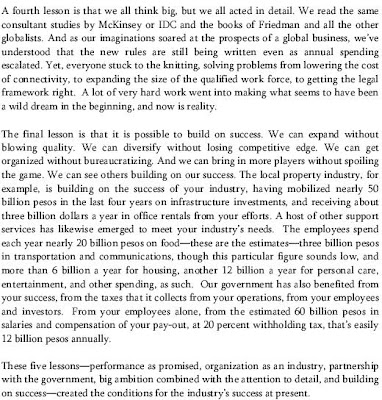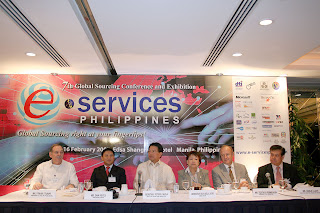Philippines to boost its software development services in Japan
 With the aim to boost the country’s proven track record in Japan as an ideal outsourcing destination for software development, the Philippines will join the Software Development Expo and Conference (SODEC) 2007 on 16-18 May at the Tokyo Big Sight.
With the aim to boost the country’s proven track record in Japan as an ideal outsourcing destination for software development, the Philippines will join the Software Development Expo and Conference (SODEC) 2007 on 16-18 May at the Tokyo Big Sight.“Our 5th participation in SODEC is a follow through activity promoting our strong points in the field of software development and other IT services,” said Trade Assistant Secretary and CITEM Executive Director Felicitas Agoncillo-Reyes.
The Philippines’ participation in SODEC is organized by the Center for International Trade Expositions and Missions (CITEM), in close coordination with the Philippine Trade and Investment Center (PTIC), Tokyo, Japan.
The following companies are the Philippine participants in this year’s SODEC: Advanced World Systems, Inc. (embedded systems to business applications development services); Alliance Software (applications software development); Astra (Philippines), Inc. (web-based systems, image management and medical applications, music, client-server, including mobile software development); Ayala Systems Technology, Inc. (Global Bridge: Suite of Technology Services, which includes offshore development, testing and maintenance services); iCatchIT (website development rich applications, software and database development services); Imperium Technology, Inc. (network monitoring system, contact center solution, voice recording system, digital banking, and enterprise telephony solutions, as well as turnkey delivery system); Tsukiden Software Philippines, Inc. (wireless, telecommunications, and business applications solutions); and Winsource Solutions Philippines, Inc. (contact center solutions).
In conjunction with the individual software development capabilities of the exhibitors, the country will also promote the FLY HIGH: Philippine Software 2010 program, a breakaway growth strategy spearheaded by the Philippines Software Industry Association (PSIA). FLY HIGH will showcase the country’s growing domestic market for IT, increasing software exports, rising number of skilled software development professionals, infrastructure for industry growth, and step-up efforts for the protection of intellectual property.
With Japan’s rising labor cost and shortage in manpower, the country’s offshore outsourcing for software development is seen to grow an average of 5% to 8% annually, this makes Japan a huge market for foreign service providers like the Philippines.
After many years of bringing their software development needs to countries like China and India, Japanese companies are currently looking for other countries that can provide more cost efficient and value-added services.
Philippine software companies’ adaptability and ability to meet deadlines remains impressive among the Japanese companies. “The country’s software development services includes a whole package of satisfactory projects, on-time delivery, technical support, and confidentiality,” added Agoncillo-Reyes.
The country’s participation in last year’s SODEC resulted in 113 trade inquiries, and generated sales of 1.6 million dollars.
A multinational company based in Japan producing multi-function peripherals which combines the functions of printer, scanner, and facsimile in their product lines, signed a contract with Advanced World Systems, Inc. early this year. “Our proven track record in providing services to multi-function peripheral manufacturers, and capability to efficiently implement their requirements, are the reasons they decided to do business with us,” said Ramil Villanueva, AVP for Corporate Planning.
To know more about the Philippine participation in SODEC 2007, contact CITEM’s IT Services Division at (632) 8325044, e-mail itservices@citem.com.ph, or log on to www.e-servicesphils.com/sodec2007.
(END)








